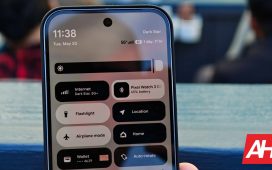A critical Android security vulnerability is now being actively exploited by malicious actors. Affecting hundreds of millions of devices running Android 13, 14, and 15, this dangerous flaw requires no user interaction to compromise affected smartphones. Google has rushed to release emergency patches, but many devices remain at risk.
The cybersecurity landscape for Android users has taken a concerning turn with the discovery of a zero-day vulnerability being actively exploited in the wild. Security researchers identified the flaw, tracked as CVE-2025-27363, affecting the text rendering library in Android’s core system. This vulnerability allows attackers to execute malicious code remotely without requiring victims to click on anything, creating a perfect storm for widespread exploitation across the Android ecosystem.
Understanding the Android zero-day threat
The newly discovered vulnerability resides in Android’s FreeType library, a critical component responsible for rendering text fonts on device screens. This severe security flaw enables attackers to trigger code execution simply by displaying a specially crafted file through a website or application.
What makes this vulnerability particularly dangerous is its zero-day classification, meaning hackers discovered and exploited it before security researchers or Google could develop and deploy patches. The technical details reveal how sophisticated the attack vector is:
| Vulnerability Details | Impact |
| CVE-2025-27363 | Remote code execution without user interaction |
| Affected Android versions | 13, 14, and 15 |
| Exploitation status | Active in-the-wild attacks confirmed |
| Patch availability | Included in May 2025 security update |
Although Google reports that current attacks appear targeted rather than widespread, the absence of required user interaction significantly elevates the threat level. This type of vulnerability could potentially allow attackers to gain complete control over compromised devices, accessing sensitive data, photos, messages, and even activating microphones or cameras without detection.
Google’s emergency security response
In response to this critical threat, Google expedited its security response protocol. On May 5th, the company released a comprehensive security bulletin addressing the Freetype vulnerability alongside 45 other security flaws discovered in the Android ecosystem.
The May security update contains patches organized in two distinct security patch levels:
- May 1, 2025 patch level – Addresses core Android system vulnerabilities, including the critical Freetype library flaw
- May 5, 2025 patch level – Targets hardware-specific vulnerabilities affecting components from Qualcomm, MediaTek, Mali, and PowerVR GPUs
Google has implemented a multi-faceted distribution strategy to protect as many devices as possible:
1. Direct system updates for supported devices through OEM channels
2. Google Play system updates to deliver critical security patches even to devices no longer receiving full system updates
3. Prioritized rollout to Google Pixel devices, with Samsung and other major manufacturers following shortly
The rapid response demonstrates Google’s commitment to Android security, though challenges remain in ensuring these patches reach all vulnerable devices promptly. Security experts emphasize that this particular vulnerability represents exactly the type of flaw that security teams most fear—one that can be exploited silently and remotely.
The patch deployment challenge
Despite Google’s swift action, a significant security gap exists in the Android ecosystem. The fragmented nature of Android device support means millions of devices may remain vulnerable for extended periods or potentially indefinitely.
The security update deployment follows a predictable pattern across the Android ecosystem:
- Google Pixel devices receive patches first, typically within days of release
- Flagship devices from major manufacturers like Samsung receive updates within 1-2 weeks
- Mid-range and budget phones follow with varying timelines
- Older devices or those from manufacturers with poor update records may never receive patches
This creates a substantial window of opportunity for attackers to target vulnerable devices. While Google has implemented measures like delivering some protections through Google Play Services, these partial mitigations cannot fully address fundamental system-level vulnerabilities like the FreeType library flaw.
Industry analysts note that Android fragmentation continues to pose security challenges. Unlike Apple’s iOS ecosystem, where update adoption typically exceeds 70% within weeks, Android’s diverse manufacturing landscape results in inconsistent patch deployment schedules across devices and regions.
Protecting your Android device
With active exploitation underway, Android users must immediately protect their devices. Security experts recommend a multi-layered approach to mitigate risks from this and similar vulnerabilities:
First and foremost, verify your device’s security patch level by navigating to Settings > About phone > Android version. If your patch level predates May 2025, you should immediately check for system updates and install any available security patches.
Beyond applying updates, implement these additional protective measures:
- Install applications only from official sources like the Google Play Store to reduce exposure to malicious apps
- Avoid clicking links from unknown senders in messages, emails, or social media
- Consider using a mobile security solution from reputable vendors to add another layer of protection
- Disable installation from unknown sources in device settings to prevent sideloading of potentially compromised apps
IT administrators should prioritize patch deployment through mobile device management (MDM) solutions for enterprise environments managing Android devices and consider implementing additional network-level protections to detect and block exploit attempts targeting the Freetype vulnerability.
The discovery of this critical Android security flaw underscores the importance of cybersecurity vigilance in our increasingly mobile-centric digital lives. As attackers continue to develop sophisticated exploitation techniques, the security partnership between technology providers, security researchers, and end users becomes more crucial than ever.









